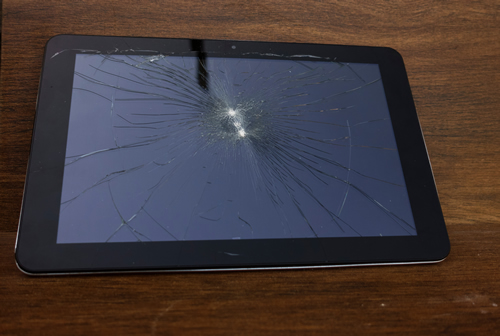As a technology user, I have over the years:
- Dropped and broken my phone’s screen
- Spilled liquid on my laptop’s keyboard, frying the motherboard
- Pulled the cord out a device, breaking off the connection
- Pushed a monitor off my desk onto the floor
- Left my computer bag on top of my car’s roof, and driven off
These acts were, believe me, unintentional. The costs of these mistakes wound up coming out of my own pocket.
So I have a degree of sympathy when our students bring their Chromebooks in for repair. Stuff happens to even the most careful technology user.
Unfortunately, we see some students whose devices need repair so often it casts doubt on just how careful they actually are with their devices. This seems especially true of our middle schoolers, who now take their Chromebooks home on foot, on buses, and on bikes and into households with siblings, pets, and who knows what else?
These are, of course, the same middle schoolers whose prefrontal cortexes are still works in progress. Our teachers and techs are often frustrated by the chronic Chromebook destroyers—and it becomes increasingly difficult to give these students the benefit of the doubt when they claim accidental damage.
Were there a magic fix to this problem, I am sure every district with a 1:1 program would be using it. To a limited degree, we find these things may be helping reduce damage in our schools…
- Making training on proper care of the student device mandatory for all kids, every year.
- Providing cases for devices.
- Establishing some degree of financial responsibility to students and parents for non-accidental damage.
- Requiring/allowing students to leave their devices at school rather than take them home (not popular with teachers whose homework requires technology use).
- Giving older, less-valuable-but-still-functioning Chromebooks to those who show chronic difficulties in responsible use.
- Counseling with students, parents, and school staff when problems are endemic.
- Keeping filtering as least restrictive as possible in hope the personal value to the student of the device will be greater if they can use it for activities other than school work. (I want my Chromebook working so I can play a game, check a sports score, and engage in social media with my peers.)
- We are discussing another strategy: What if we try to use building culture to increase the care given to technology? Make good technology use a building-wide effort and responsibility? Would a carrot approach help? Let’s say we allocated $10,000 for computer repairs to each building and then any monies not used for repair of student devices could be used for elective technology purchases to be determined by the building.
When I taught junior high back in the dark ages, one of the teacher’s favorite expressions was, “You buy’m books and buy’m books, and all they do is eat the covers.” Were that same teacher working today, would the expression be, “You buy’m devices and buy’m devices, and all they do is break the screens?”
I suspect this is a “wicked” problem schools will struggle with for a long time. I don’t anticipate Apple or Dell or Acer coming out with a 7th-grader-proof computing product anytime soon.
How do you improve the care and feeding of the student devices in your school?
[Editor’s Note: This article was first published on the Blue Skunk Blog [1].]
